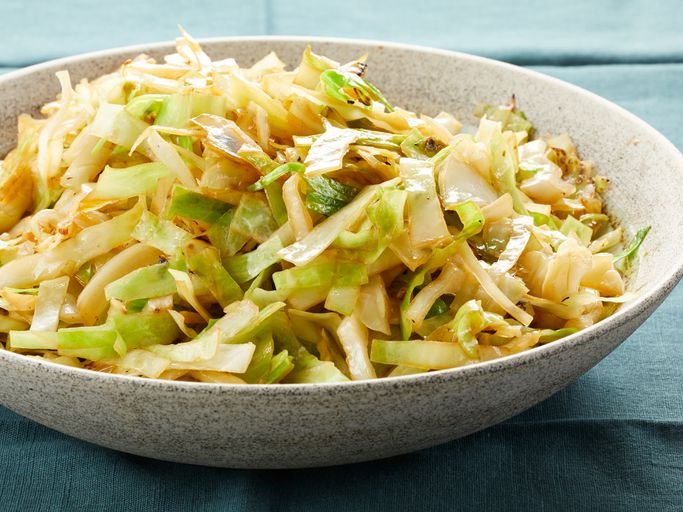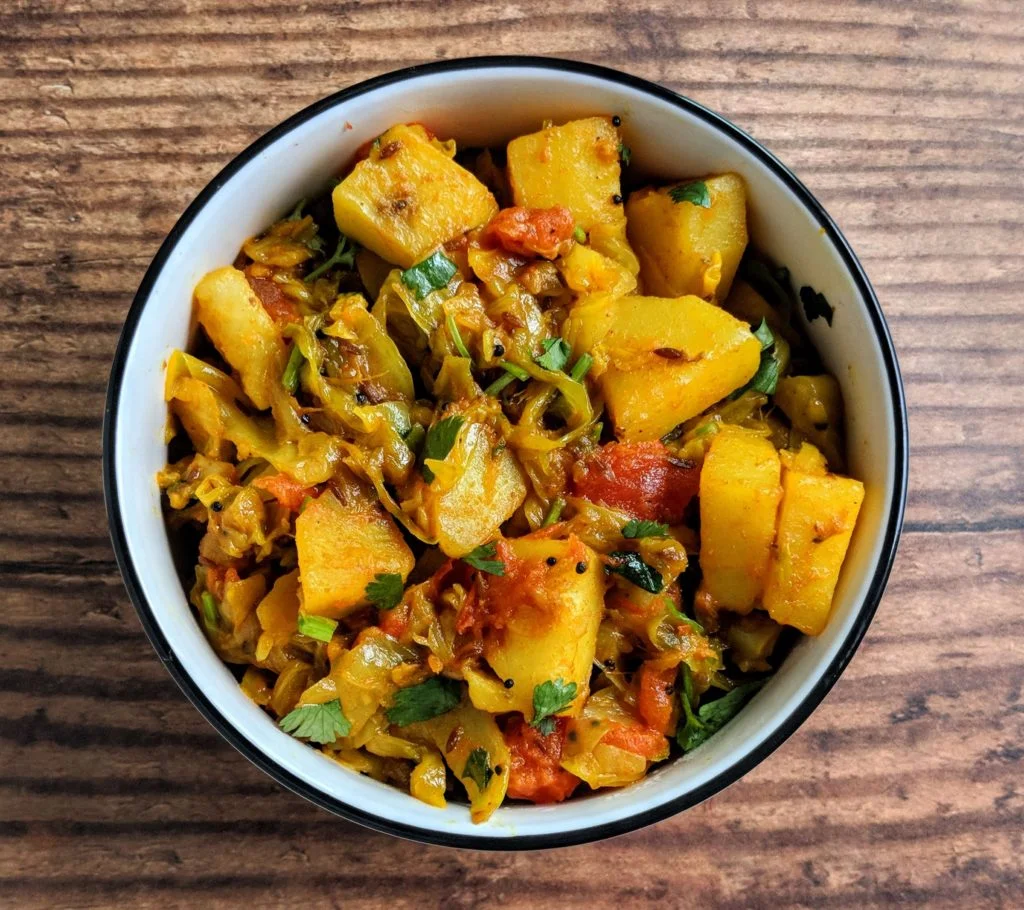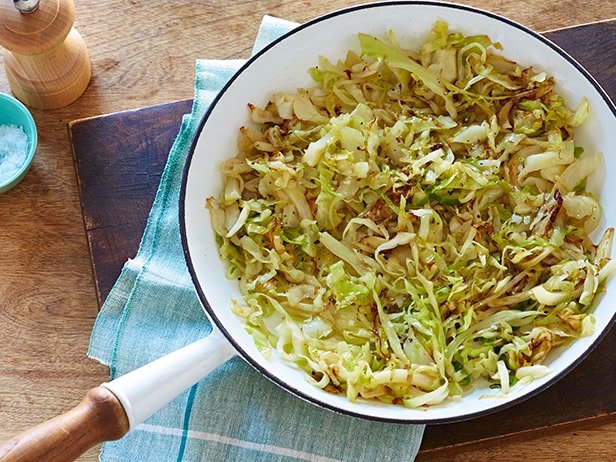Cabbage is one of the most versatile and nutritious vegetables in our kitchens. It’s low in calories, packed with vitamins and minerals, and highly fiber-rich, making it an excellent choice for those aiming for a healthy diet. Traditional Indian cooking often uses oil to sauté vegetables, but did you know you can prepare a delicious, flavorful cabbage sabzi without a single drop of oil? This 5-step guide will show you how to make a wholesome, oil-free cabbage sabzi that’s perfect for lunch, dinner, or even a light snack.
Why Choose Oil-Free Cooking?
Before we dive into the recipe, it’s worth understanding the benefits of cooking without oil:
- Low-Calorie Dish: Removing oil significantly cuts down the calorie content, helping with weight management.
- Heart-Friendly: Avoiding oil reduces saturated fat intake, promoting better heart health.
- Retains Nutrients: High heat from oil can sometimes destroy delicate nutrients. Oil-free cooking helps preserve vitamins like C and K present in cabbage.
- Natural Taste: The flavors of the vegetables and spices shine through more distinctly without oil.
With this knowledge, you’re ready to explore a healthy and delicious cabbage sabzi recipe.
Ingredients You’ll Need
Here’s what you need to make an oil-free cabbage sabzi serving 3–4 people:
- Cabbage – 1 medium-sized, finely chopped
- Onion – 1 medium, finely chopped
- Tomatoes – 2 medium, pureed or finely chopped
- Green chilies – 2, finely chopped
- Ginger-Garlic Paste – 1 tsp
- Turmeric Powder – ½ tsp
- Red Chili Powder – ½ tsp (adjust to taste)
- Cumin Seeds – ½ tsp
- Coriander Powder – 1 tsp
- Garam Masala – ½ tsp
- Salt – to taste
- Water – ¼ cup (or as needed)
- Fresh Coriander – for garnishing
Step 1: Preparing Your Ingredients

The first step in any delicious sabzi is preparation. Wash the cabbage thoroughly to remove any dirt or pesticides. Remove the tough outer leaves and finely chop the inner leaves. Finely chop the onions, green chilies, and tomatoes.
Pro tip: If you want a smoother texture for the sabzi, you can puree the tomatoes instead of chopping them. This ensures the flavors mix evenly with the cabbage.
Step 2: Steam Sautéing Without Oil

Traditionally, sabzis are sautéed in oil, but for this oil-free version, we’ll use a small amount of water or vegetable broth to mimic the cooking process.
- Heat a non-stick pan or wok over medium heat.
- Add cumin seeds and allow them to release their aroma for a few seconds.
- Add chopped onions, green chilies, and ginger-garlic paste along with 1–2 tablespoons of water.
- Stir continuously to prevent sticking, cooking until the onions turn soft and translucent.
This water sautéing method ensures the onions release their natural sweetness, forming a flavorful base for the cabbage.
Step 3: Adding Spices and Tomatoes

Once your onions are soft, it’s time to add the spices and tomatoes. This step enhances the flavor profile without the need for oil.
- Add turmeric powder, red chili powder, coriander powder, and salt. Mix well.
- Add chopped or pureed tomatoes, along with 2–3 tablespoons of water.
- Cook the mixture until the tomatoes turn soft and mushy, and the spices are well blended.
Tip: Keep stirring occasionally to prevent the mixture from sticking to the pan. This technique helps in releasing the natural flavors of spices and tomatoes.
Step 4: Cooking the Cabbage

Now, it’s time to introduce the star ingredient—cabbage.
- Add the chopped cabbage to the pan.
- Sprinkle 2–3 tablespoons of water and stir everything together.
- Cover the pan with a lid and cook on medium-low heat for 10–12 minutes.
- Stir occasionally and add more water if needed to prevent sticking.
Cooking cabbage this way allows it to soften and absorb the spices perfectly. The steam from the water helps in cooking without the need for oil, while preserving its crunchiness and nutrients.
Pro tip: If you like your cabbage slightly crunchy, cook it for just 8–10 minutes; for a softer texture, extend the cooking time slightly.
Step 5: Finishing Touches and Garnishing

Once the cabbage is cooked to your preferred consistency:
- Sprinkle garam masala and mix well.
- Turn off the heat and garnish with fresh coriander leaves.
- Optionally, you can add a squeeze of lemon juice to enhance the freshness and flavor.
Your oil-free cabbage sabzi is now ready to serve!
Serving Suggestions
- Pair it with roti, chapati, or paratha for a wholesome meal.
- Serve alongside brown rice or quinoa for a nutritious, fiber-rich lunch.
- Combine with dal or sambar for a complete South Indian meal.
Tips for Perfect Oil-Free Cabbage Sabzi
- Non-Stick Pan: Using a good non-stick or ceramic pan ensures the sabzi doesn’t stick without oil.
- Use Water Strategically: Adding small amounts of water in stages prevents burning and helps in proper steaming.
- Cook on Medium Heat: Medium heat allows vegetables to cook evenly without scorching.
- Spice It Up: Adjust chili powder and green chilies according to your taste preference.
- Experiment: Try adding other vegetables like carrots, peas, or bell peppers for variety.
Health Benefits of Cabbage Sabzi
- Rich in Vitamins: Cabbage is high in Vitamin C, promoting immunity and skin health.
- High Fiber Content: Aids in digestion and prevents constipation.
- Antioxidant-Rich: Helps combat free radicals and supports overall wellness.
- Low in Calories: Perfect for weight management and healthy eating.
Conclusion
Cooking cabbage sabzi without oil doesn’t mean sacrificing taste. By using water sautéing, aromatic spices, and fresh ingredients, you can prepare a dish that’s light, flavorful, and nourishing. With just five simple steps, you can enjoy a healthy, guilt-free meal that’s perfect for everyday cooking.
So, next time you crave a quick and nutritious Indian sabzi, try this 5-step oil-free cabbage sabzi recipe—it’s wholesome, easy, and absolutely delicious!





